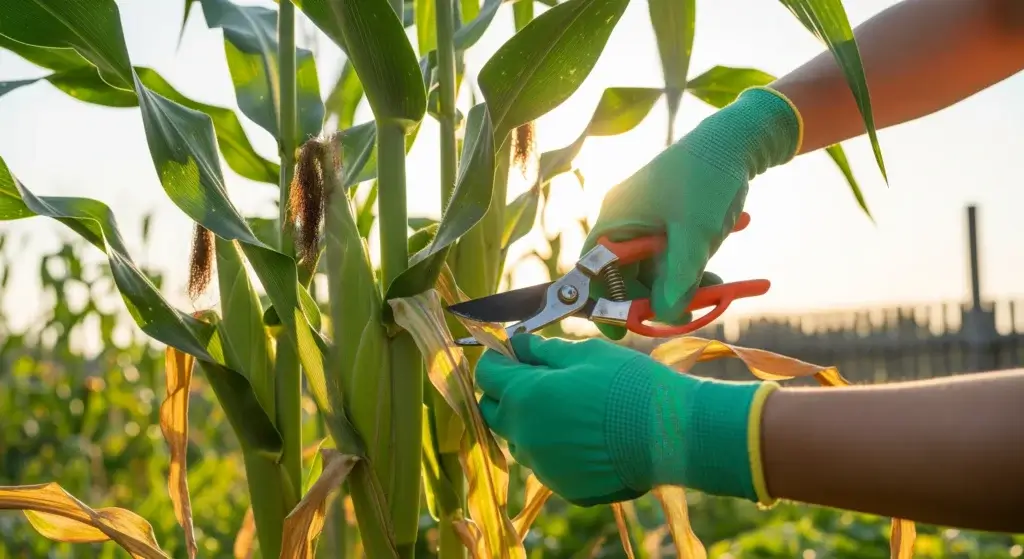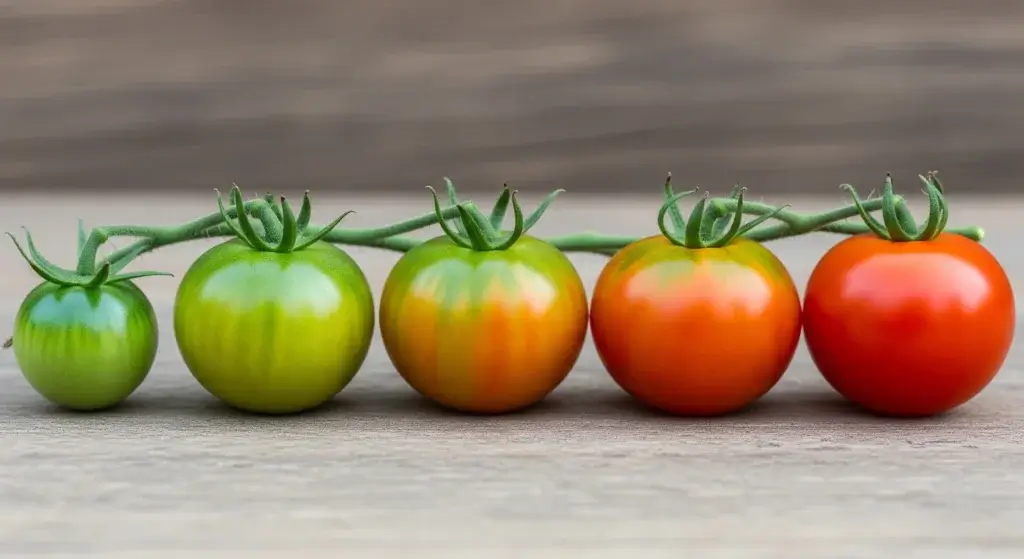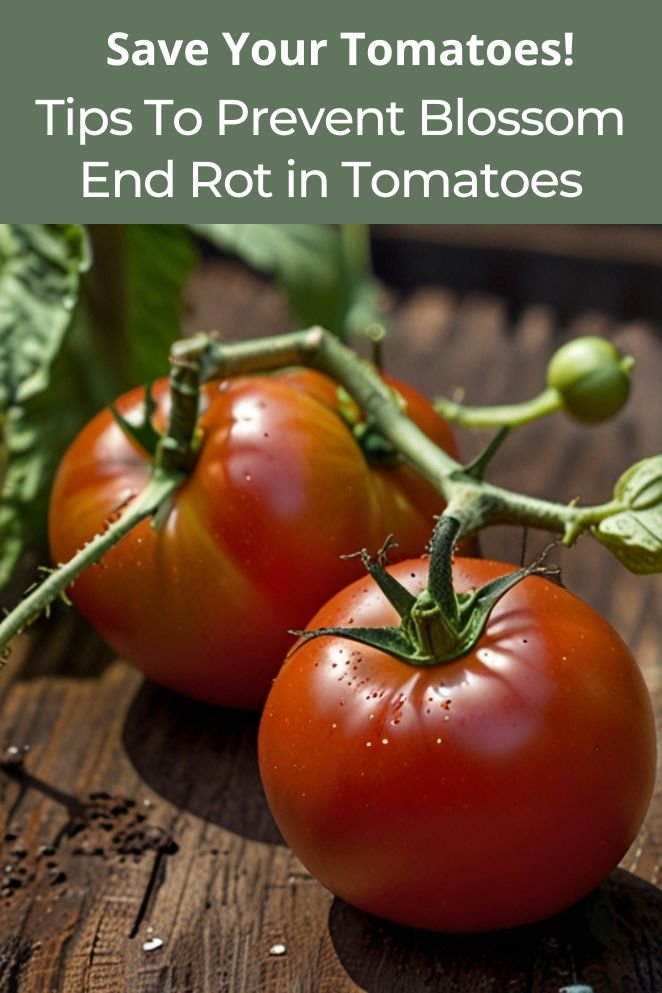
Growing your own tomatoes can be incredibly rewarding, but it comes with its challenges.
One of the most frustrating issues tomato growers face is blossom-end rot.
This common problem can ruin your tomato harvest, but the good news is that it can be prevented with the right knowledge and care.
In this blog post, we’ll delve into what causes it and most importantly, how you can prevent it.
What is Blossom-End Rot
Blossom-end rot is a physiological disorder affecting tomatoes, characterized by a dark, sunken spot at the blossom end of the fruit.
This condition is not a disease caused by bacteria or fungi but is instead linked to nutritional imbalances, specifically a lack of calcium in the fruit.
As the fruit grows, this calcium deficiency leads to the breakdown of cell walls in the tomato, resulting in the characteristic rot.
- Read also: Unlock the Secret: Tomato Plant Watering Schedule
- Read also: Issues and Solutions: Troubleshooting Tomato Leaf Problems

What Causes Blossom-End Rot
Understanding the causes of blossom-end rot is key to preventing it.
This condition, which results in unsightly, sunken spots on the blossom end of tomatoes, can be frustrating for gardeners.
However, by addressing the underlying factors that contribute to blossom-end rot, you can protect your tomato plants and enjoy a healthier harvest.
Here are the primary factors that lead to blossom-end rot:
Calcium deficiency
The most direct cause of blossom-end rot is a lack of calcium in the developing fruit.
Calcium is crucial for building strong cell walls in plants.
When tomatoes lack calcium, the cell walls in the fruit begin to break down, leading to the characteristic rot.
Several factors can contribute to calcium deficiency in tomatoes, including:
- Inadequate calcium in soil: If the soil itself lacks sufficient calcium, the plants won’t get enough of this vital nutrient.
- Poor calcium uptake: Even if the soil contains adequate calcium, factors such as inconsistent watering or poor root health can hinder the plant’s ability to absorb and transport calcium to the fruit.
Inconsistent watering
Fluctuations in soil moisture can significantly impact a tomato plant’s ability to absorb calcium.
Both over-watering and under-watering can create conditions that lead to blossom-end rot:
- Overwatering: Excessive watering can waterlog the soil, making it difficult for roots to absorb nutrients properly. This can disrupt the uptake of calcium.
- Underwatering: On the flip side, allowing the soil to dry out between waterings can also prevent the plant from absorbing enough calcium. The key is to maintain a consistent level of moisture in the soil.
Soil pH
The pH level of the soil can affect the availability of calcium to the tomato plants. Tomatoes prefer slightly acidic to neutral soil, with a pH range of 6.2 to 6.8.
If the soil pH is outside this range, calcium availability can be compromised:
- Acidic soil (Low pH): In very acidic soils, calcium can become less available to plants, even if it’s present in the soil.
- Alkaline soil (High pH): Similarly, highly alkaline soils can also reduce calcium availability. It’s essential to maintain the soil pH within the ideal range to ensure that tomatoes can access the nutrients they need.
High nitrogen fertilizers
Excessive nitrogen in the soil can exacerbate the problem of blossom-end rot.
While nitrogen is essential for plant growth, too much nitrogen can cause plants to grow too quickly, leading to:
- Rapid growth: When plants grow too rapidly, their demand for calcium increases. If the calcium uptake cannot keep pace with the growth rate, the developing fruits may suffer from a calcium deficiency.
- Imbalanced nutrition: High nitrogen levels can also lead to imbalances in other nutrients, further complicating the plant’s ability to absorb calcium effectively.
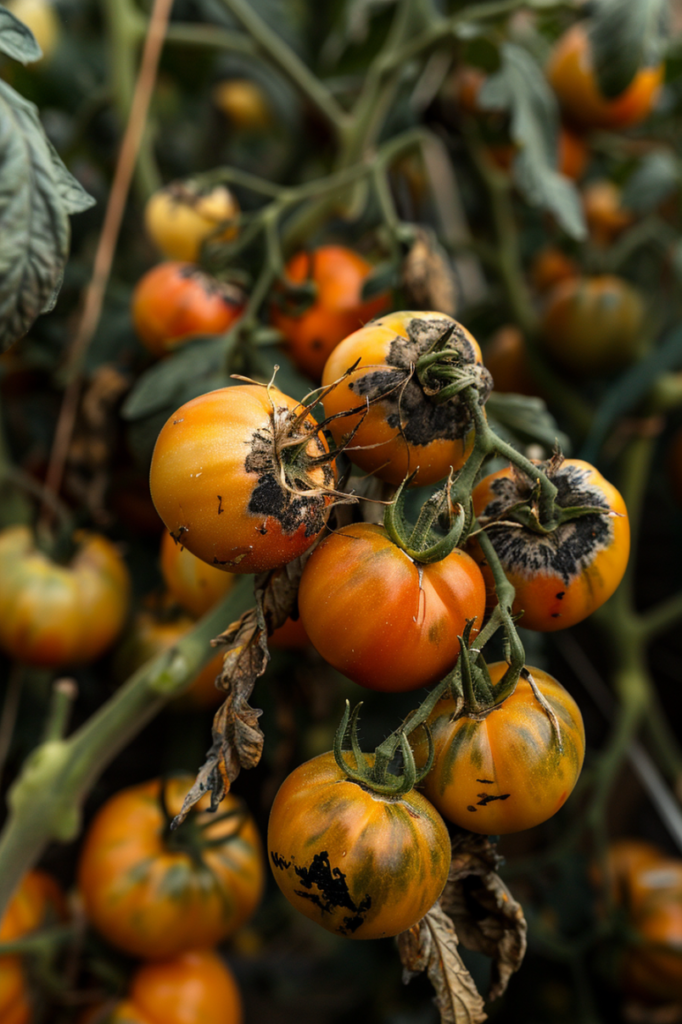
Is Blossom-End Rot Reversible on Tomatoes
Blossom-end rot (BER) is a common issue for tomato growers, and it’s important to understand that once a tomato fruit shows signs of this condition, it is not reversible for that particular fruit.
The affected tissue at the blossom end of the fruit has already undergone cell wall breakdown.
However, the good news is that you can take steps to prevent it from affecting new fruits on the same plant.
How to Prevent Blossom-End Rot
Preventing blossom-end rot involves addressing the factors that cause it.
Here are some practical steps to keep your tomatoes healthy and rot-free:
Add calcium to the soil
If your soil test shows a calcium deficiency, you can add calcium directly to the soil:
- Use calcium sprays: Apply calcium chloride or calcium nitrate sprays directly to the foliage to provide an immediate source of calcium. Follow the manufacturer’s instructions for application rates and frequency.
- Add other calcium: Crushed eggshells, bone meal, or calcium carbonate can be mixed into the soil at planting time.
Ensure consistent watering
To prevent blossom-end rot, it’s important to keep the soil consistently moist.
Fluctuations in soil moisture levels can hinder the plant’s ability to absorb calcium, which is crucial for healthy fruit development.
One way to maintain soil moisture is by applying mulch, which helps retain moisture and keeps the soil temperature stable.
Additionally, using drip irrigation or soaker hoses can provide a steady and direct supply of moisture to the root zone, ensuring that plants receive the water they need without overwatering or underwatering.
Proper soil management
Before planting, it’s a good idea to test your soil to check its pH and nutrient levels.
Most garden plants thrive in soil with a pH between 6.0 and 6.8.
If your soil is too acidic, with a pH below 6.0, you can raise the pH by adding lime.
On the other hand, if it’s too alkaline, you can lower the pH by adding sulfur.
If the soil test indicates a calcium deficiency, you can improve it by adding gypsum (calcium sulfate) or lime (calcium carbonate) to the soil.
These amendments help ensure that your plants have the necessary nutrients to grow strong and healthy.
Fertilization balance practices
When choosing fertilizer for your plants, look for a balanced option that doesn’t have too much nitrogen.
Too much nitrogen can cause plants to focus on growing leaves instead of producing fruit, and it can also interfere with their ability to absorb calcium.
It’s best to avoid fertilizers that contain ammonium because they can compete with calcium uptake.
Instead, opt for fertilizers that are nitrate-based.
This will help ensure that your plants get the nutrients they need to thrive and produce healthy fruits.
Cultivar selection
Choose cultivars that are less prone to blossom-end rot.
Some varieties have been bred for improved calcium uptake and resistance to this disorder.
- Read also: Causes and Solutions: Troubleshooting Tomato Stem Problems
- Read also: A Guide: Mastering the Art of Drip Irrigation for Tomatoes
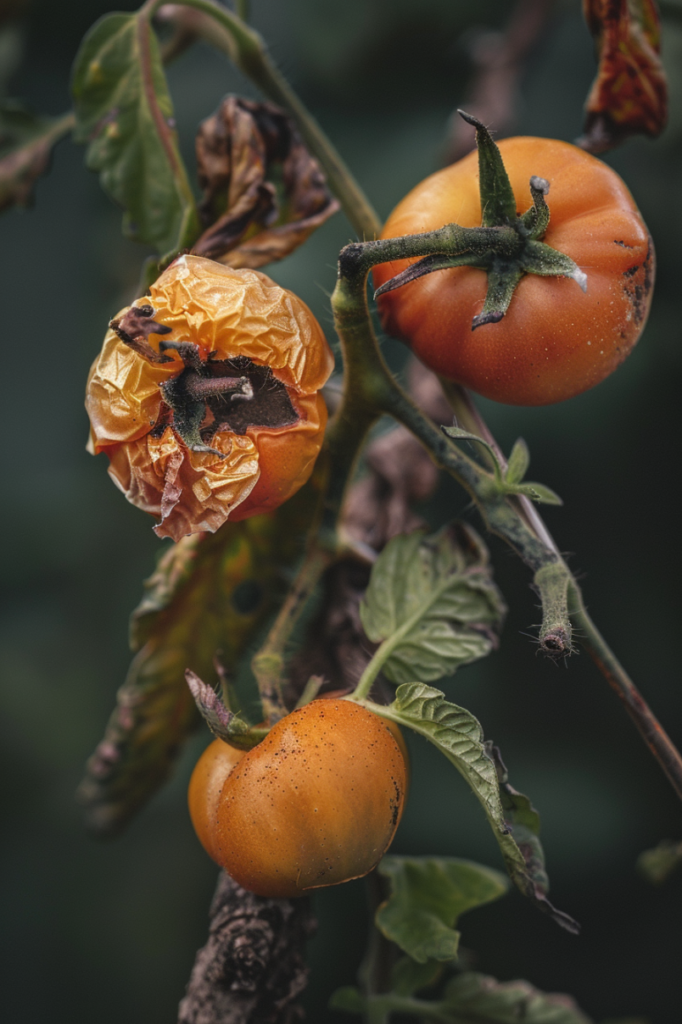
Conclusion
Blossom-end rot can be a disheartening issue for tomato growers, but with a proactive approach, it can be effectively prevented.
By ensuring consistent watering, maintaining proper soil pH, using balanced fertilizers, and providing adequate calcium, you can enjoy a bountiful harvest of healthy, delicious tomatoes. Happy gardening!
FAQs
No, blossom-end rot is not a contagious disease. It’s a physiological disorder related to nutrient uptake and doesn’t spread from one fruit to another.
Yes, you can cut off the affected portion and eat the rest of the tomato. The unaffected part is safe to consume.
Not necessarily. Even healthy soils can have issues with nutrient imbalances or watering inconsistencies that lead to blossom-end rot.
Improvements can often be seen within a few weeks after correcting watering practices and nutrient imbalances. However, existing affected fruits will not recover, so monitor new growth for signs of improvement.

